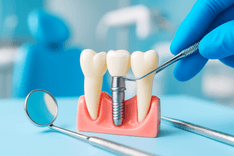The First 5 Symptoms of Kidney Disease You Should Never Ignore
Kidney disease often develops quietly — and that’s what makes it so dangerous. Many people miss the earliest warning signs, dismissing them as stress, dehydration, or aging. But understanding the first 5 symptoms of kidney disease can make all the difference between early recovery and long-term complications. Awareness isn’t about fear — it’s about control.
1️⃣ Fatigue That Doesn’t Go Away
When the kidneys begin to fail, toxins and waste products build up in the blood. This can cause constant tiredness, lack of focus, and even dizziness. The body’s red blood cell count may drop due to decreased erythropoietin production — a hormone produced by healthy kidneys.
If you’ve been sleeping well yet feel constantly drained, this is a key signal worth investigating. It’s not always stress — sometimes it’s your body trying to tell you something deeper.
2️⃣ Swelling in the Hands, Ankles, or Face
Healthy kidneys balance sodium and water levels. When they struggle, fluid retention can appear around the eyes, in the ankles, or in the hands. People often notice tight shoes or puffiness in the morning.
While swelling can come from many causes, kidney-related edema is often symmetrical and progressive. It’s one of the earliest external signs physicians use to flag potential renal decline.
3️⃣ Changes in Urination
One of the most direct indicators is how often and how easily you urinate. Foamy urine, dark color, or increased frequency at night can all indicate that your kidneys aren’t filtering properly.
Some people also experience pain or a burning sensation during urination — often mistaken for infection. The important detail is consistency: changes that persist beyond a few days should always be medically reviewed.
4️⃣ Persistent Back or Flank Pain
Pain in the lower back or sides could signal kidney inflammation, stones, or infection. Unlike muscular pain, kidney discomfort often feels deeper and isn’t relieved by stretching or rest.
In chronic kidney disease (CKD), pain might come from cysts forming within the kidneys or from increased pressure due to fluid imbalance. It’s not always severe — but it’s persistent, and it often coincides with other symptoms on this list.
5️⃣ Skin Itching and Dryness
As kidneys lose function, phosphorus builds up in the body, while vital minerals like calcium can drop. This imbalance can cause skin irritation, itchiness, and dryness — especially on the back, arms, and legs.
Many people treat it as a dermatological issue, unaware that it could stem from declining kidney function. When combined with other mild symptoms, this becomes a powerful early clue.
Understanding Why Early Detection Matters
Your kidneys filter roughly 50 gallons of blood every day, removing waste and maintaining internal balance. Once they start to decline, the damage can progress silently for years. Early detection allows for interventions that can slow or even reverse certain stages of kidney disease.
What’s encouraging is that lifestyle, hydration, diet, and regular screening can make a significant impact. For example:
Managing blood pressure and blood sugar helps reduce strain on the kidneys.
Staying hydrated supports toxin removal.
Regular checkups ensure early markers like creatinine and GFR (glomerular filtration rate) are tracked.
The Overlooked Connection Between Daily Habits and Kidney Health
Small, consistent actions influence kidney function more than we realize. Diets high in processed sodium or sugary drinks can accelerate wear on these organs. Conversely, plant-based diets and moderate salt intake help reduce workload.
Stress, too, plays a hidden role — increasing cortisol, which can affect blood pressure and filtration efficiency. Even mild dehydration — something as simple as forgetting water throughout the day — can subtly burden the kidneys over time.


